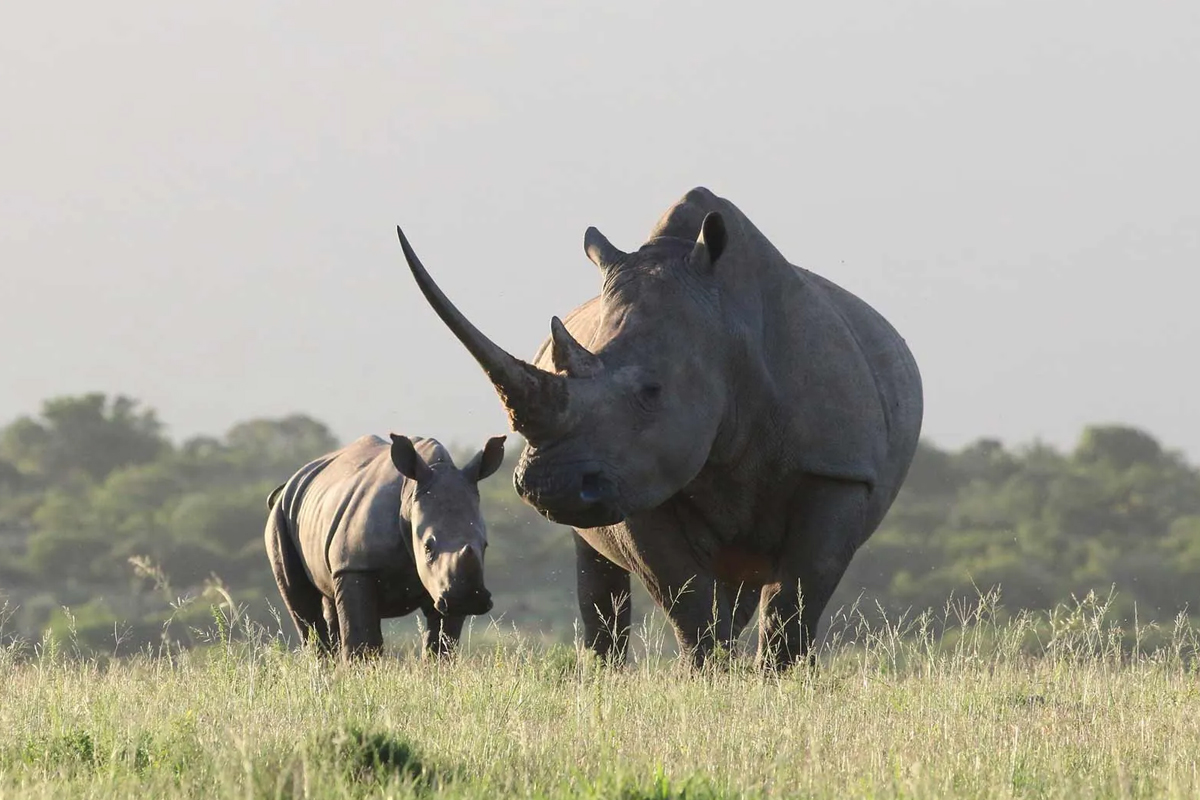White Rhino Safari Tanzania 2025
Tanzania’s wildlife scene just got a major boost—the white rhino is back! After decades of absence, these magnificent creatures are once again roaming Tanzanian soil. This is a huge win for conservationists and an exciting development for safari lovers. But why did they disappear in the first place? And what does their return mean for Tanzania’s thriving safari industry? Let’s dive in!
The Story Behind White Rhinos’ Return
- A Brief History of White Rhinos in Tanzania: White rhinos were once part of Tanzania’s rich biodiversity. However, due to poaching and habitat loss, their numbers dwindled, leading to their disappearance from the country.
- Reasons for Their Disappearance: The primary culprit? Poaching. In the past, illegal hunting for rhino horns skyrocketed, leading to a drastic population decline. Additionally, habitat destruction due to human encroachment played a major role in their disappearance.
- The Efforts Behind Their Reintroduction: Thankfully, conservationists never gave up. Organizations, in collaboration with the Tanzanian government, worked tirelessly to reintroduce white rhinos into safe, well-protected areas. Their return marks a significant victory for wildlife conservation.
The Role of Conservation Efforts
- Organizations Leading the Charge: Groups like the Tanzania Wildlife Management Authority (TAWA) and international conservation organizations have played a pivotal role in this effort. They have worked on translocating rhinos from other regions while ensuring their safety.
- The Importance of Protected Areas: National parks and private reserves are now home to the newly introduced rhinos. These areas provide the perfect habitat while ensuring their security.
- Anti-Poaching Measures: With advanced surveillance technology, anti-poaching units, and stricter laws, Tanzania is committed to protecting these gentle giants. Rangers are constantly patrolling to keep poachers at bay.
White Rhinos in Tanzania’s Ecosystem
- Contributing to Biodiversity: White rhinos play a crucial role in the ecosystem. They help maintain grassland health by grazing, which benefits other herbivores and keeps the landscape balanced.
- Impact on Other Wildlife: As they return, white rhinos indirectly support other species by shaping their habitats. More grazing means healthier grasslands, benefiting animals like zebras and antelopes.
What This Means for Safari Tourism
- The Growing Appeal of Rhino Sightings: Tourists now have another reason to visit Tanzania! Seeing white rhinos in the wild is a breathtaking experience that will attract more travelers eager to witness them up close.
- Impact on the Safari Industry: With rhino sightings now on the list, Tanzania’s safari industry is set to thrive even more. Lodges and tour operators are already creating specialized rhino-tracking safaris.
- How Tour Operators Are Adapting: Many safari companies are adding rhino tours to their itineraries, offering guided experiences where visitors can learn about conservation while spotting these magnificent animals.
Best Places to See White Rhinos in Tanzania
-
Serengeti National Park – While famous for the Great Migration, the park is also a prime spot for rhino conservation.
-
Ngorongoro Conservation Area – A UNESCO World Heritage Site that now houses white rhinos.
-
Mkomazi National Park – Known for its rhino sanctuary, this park offers a more intimate safari experience.
How to Plan a Safari to See White Rhinos
-
Best Time to Visit – The dry season (June to October) offers the best wildlife viewing opportunities.
-
Recommended Safari Packages – Opt for tours that focus on rhino conservation for an educational and exciting experience.
-
Essential Travel Tips – Book with reputable safari operators, carry the right gear, and respect wildlife rules.
Challenges and Risks
-
Threats to Their Survival – Despite strict protections, poaching remains a potential risk.
-
Ongoing Conservation Challenges – Sustaining rhino populations requires constant funding and efforts.
-
The Need for Continuous Efforts – Conservationists urge ongoing support from governments, organizations, and travelers alike.
The Future of White Rhinos in Tanzania
-
Long-Term Conservation Plans – Plans include breeding programs and expanding protected areas.
-
How Travelers Can Contribute – Tourists can support by choosing ethical safaris, donating to conservation funds, and spreading awareness.
-
Future Hopes for Population Growth – With continued efforts, white rhino numbers will hopefully increase, ensuring their long-term survival in Tanzania.
The return of white rhinos to Tanzania is a monumental achievement. Not only does it symbolize conservation success, but it also brings new opportunities for safari tourism. As efforts continue to protect these magnificent creatures, travelers now have a chance to witness history in the making.
FAQs
1. Where can I see white rhinos in Tanzania?
You can spot them in Serengeti National Park, Ngorongoro Conservation Area, and Mkomazi National Park.
2. Why did white rhinos disappear from Tanzania?
Poaching and habitat loss were the main reasons for their disappearance.
3. What measures are in place to protect white rhinos?
Strict anti-poaching laws, surveillance, and conservation initiatives are ensuring their safety.
4. How does their return impact local communities?
Increased tourism provides economic benefits to local communities through job opportunities.
5. How can I support rhino conservation?
You can support by visiting ethical safari operators, donating to conservation programs, and spreading awareness.
Plan Your Perfect Getaway:
Create unforgettable memories with your dream vacation!












